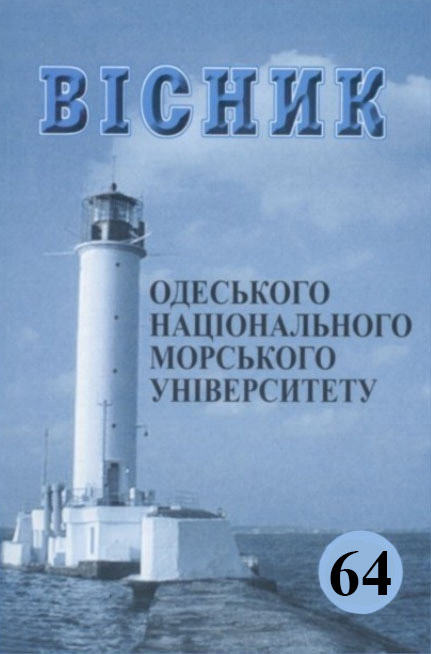Динаміка захисту житлової зони акустичними екранами від впливу транспортних потоків порту «Південний»
##plugins.themes.bootstrap3.article.main##
Анотація
У статті висвітлено норми рівня шуму житлових зон забудови, заходи щодо забезпечення нормованого рівня шуму. Наведено норми шуму транспортних засобів в залежності від відстані до житлової зони, розрахунок нормованого рівня шуму, а так само запропоновано спосіб зниження рівня шуму за допомогою шумозахисних екранів. Запропоновані схеми акустичного розрахунку поглинання екранів з додаванням особливостей конструкцій екранів. З урахуванням часткових складових екранів наведені оптимальні комбінації щодо вузлів конструкцій екранів, їх можливих гармонійних впливів з метою попередження взаємовібрацій аеродинамічного та структурного походження. Надано схеми компенсаційних розрахунків із використанням спеціальних програм сімейства COMSOL та спорідненого програного забезпечення акустичного контролю. Запропоновані методи розрахунку, що виключають можливість виникнення акустичного резонансу аеродинамічного та структурного походження на етапах монтажу конструкцій шумозахисних екранів. На етапах попередження взаємовібрацій конструкцій переглянута можливість об’єднання окремих блоків з алгоритму визначення акустичного ефекту за рахунок конструктивного та ландшафтного дизайну. До блоку СOMSOL додана корегуюча ландшафтно-дистанційна складова задля попередження акустичних вібрацій з боку екранів та їх конструктивних зв'язків з опорними елементами шумозахисної системи шляхової системи магістралі.
##plugins.themes.bootstrap3.article.details##
Посилання
2. Zienkiewicz, O.C. Finite Element Method / O.C. Zienkiewicz, R.L. Taylor. – UK: Butterworth-Heinemann, 2000, Vol. 1. ISBN: 978-0750650496.
3. Avtomobіl'nі dorogi. Sporudi shumozahisnі. Vimogi do proektuvannja: GBN V.2.3-37641918-556:2015. − K.: Mіnіsterstvo іnfrastrukturi Ukraїni, 2015. – 30 s.
4. Metodi j zasobi zahistu іnformacії / V.A. Horoshko, A.A. Chekatkov. – K.: Junіor, 2003. – 504 s.
5. Akusticheskij proekt pomeshhenija: Metodicheskie ukazanija k kursovoj rabote po discipline «Akustika» / E.S. Belous, B.M. Beskorovajnyj, V.B. Galanenko, V.T. Grinchenko, M.I. Karnovskij, B.I. Shockij. – K.: KPI, 1985. – 68 с.
6. Fedotov, E.S., Kustov, O.Ju., Hramcov, I.V., Pal'chikovskij, V.V. Sravnitel'nyj analiz akusticheskih interferometrov na osnove raschjotno-jeksperimental'nyh issledovanij obrazcov zvukopogloshhajushhih konstrukcij // Vestnik Permskogo nacional'nogo isledovatel'skogo politehnicheskogo universiteta. Ajerokosmicheskaja tehnika. – 2017. – № 48. – S. 89-103.
7. Hramcov, I.V., Kustov, O.Ju., Fedotov, E.S., Pal'chikovskij, V.V., Siner, A.A. Chislennoe modelirovanie akusticheskih processov v interferometre s obrazcami mnogoslojnyh zvukopogloshhajushhih konstrukcij // Vestnik Permskogo nacional'nogo issledovatel'skogo politehnicheskogo universiteta // Ajerokosmicheskaja tehnika. 2017. – № 51. S. 5-15.
